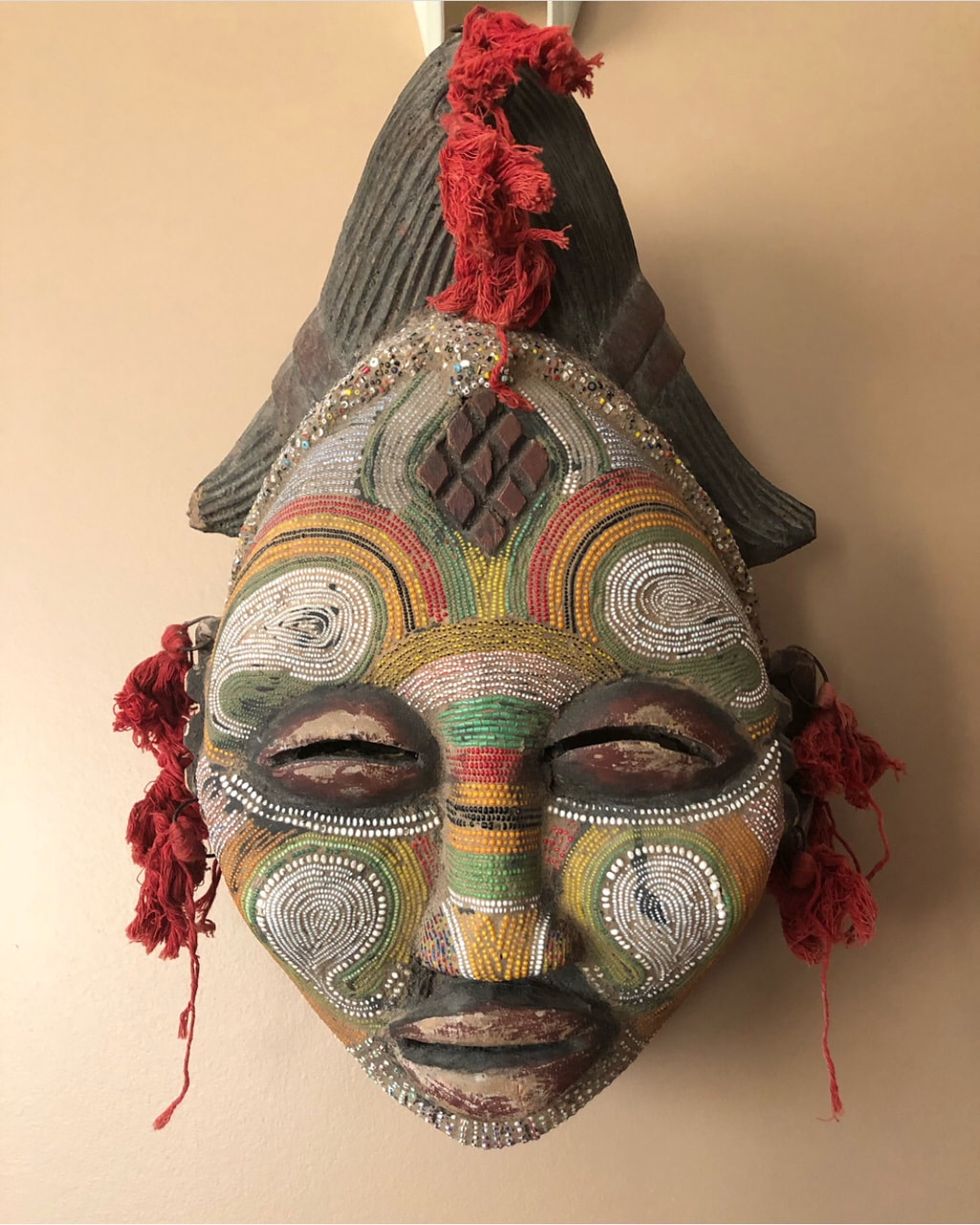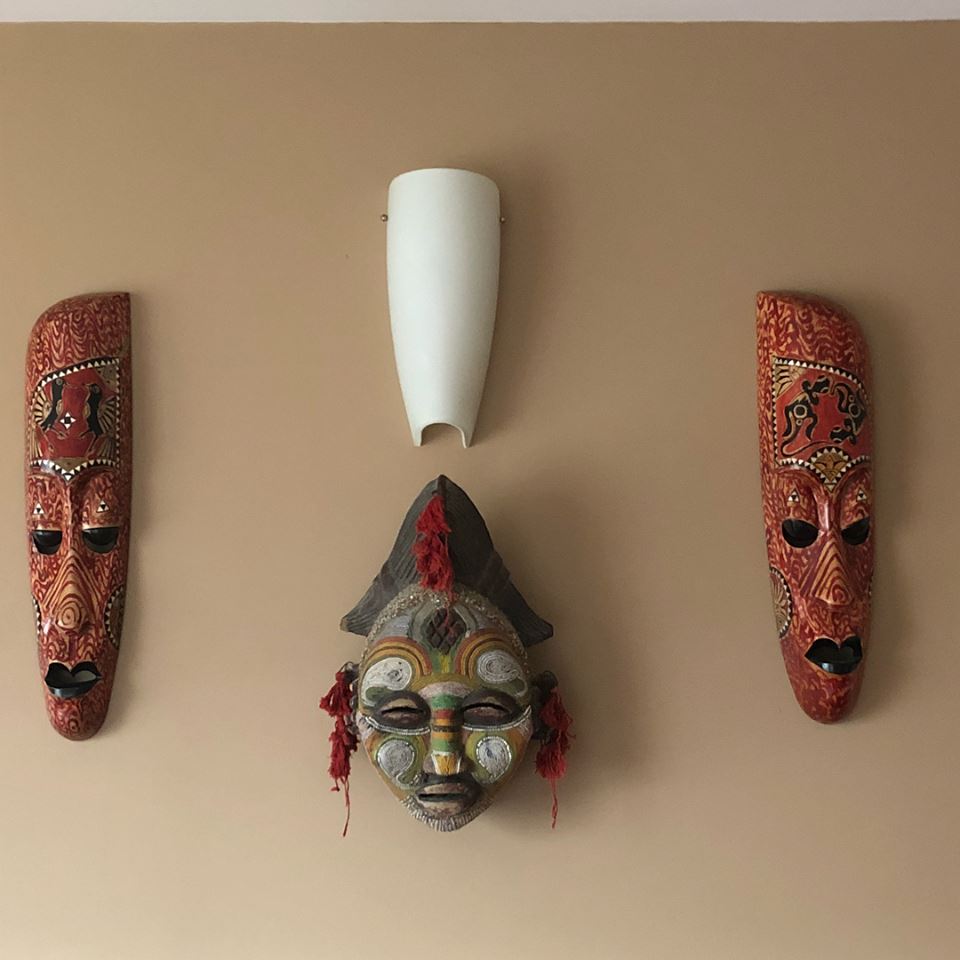|
In June, I purchased a Ghana mask that I named Mother Umi. She is a Kasai River Goddess of the Pende people. I was on a mission to start collecting authentic African art after being inspired by the museum heist scene in Black Panther. "How do you think your ancestors got these? Do you think they paid a fair price? Or did they take it... like they took everything else?" - Killmonger When I first saw Umi, I knew I wanted her to be the first mask to grace my wall. Fresh off a trip to The Met museum a month earlier to view the "Heavenly Bodies: Fashion and the Catholic Imagination" exhibit and other artifacts, my interest peaked that much more. After reading about the Kasai River and it's tributaries, and the effects it had on the slave trade and it's alluvial diamonds lying in rich deposit beds, I then realized why I was so drawn to it. Mother Umi Joining Mother Umi, meet the twins! In Yoruba language, twins are called “Ibeji”. The first born twin is usually named Taiyewo, and he’s adorning my wall on the left. I’ll call him Tai for short, and he is dedicated to my deceased uncle John, my mother’s twin brother. On the right is Kehinde - Keh for short. That is the name given to the second born twin, and she is dedicated to my mother, who was born second. Now, I know I said I was collecting African art, but I got these from Jamaica on the way to see Bob Marley’s Mausoleum during my birthday trip, and they were made in Indonesia. They are Batik masks made from wood and cassava. Batik is the art of wax-resist dyeing, traditionally applied to cotton fabrics. The tradition of making batik is found in various countries; the batik of Indonesia, however, may be the best-known. Wax resist dyeing of fabric is an ancient art form. It already existed in Egypt as early as the first century where it was discovered in ancient Egyptian tombs. It was used to wrap mummies; linen was soaked in wax, and scratched using a stylus. In Africa, it was also heavily practiced by the Yoruba tribe in Nigeria - Hey maternal lineage, hey!!! The African version of batik, however, uses cassava starch or rice paste, or mud as a resist instead of beeswax like most masks made in Indonesia. Interesting to note, the world’s largest producer of cassava is Nigeria, and it’s vital to their economy. Scholars believe that Indonesian batik was introduced during the 6th or 7th century from India or Sri Lanka - an art form originally learned from the Motherland. Also interesting to note, I have Asia South (India, Sri Lanka) ancestry although it’s less than 2%. #GhanaMask #BatikMasks #AfricanArt #JamaicanArt #IndonesianArt #Acculturation #ItsInMyDNA #KnowThyself #ArtCollector #MyBirthdayPresentToMyself #MyHomeIsAMuseum #ArtHistoryLesson #TheMoreYouKnow Taiyewo bka Tai Kehinde bka Keh We Wear the Mask
BY PAUL LAURENCE DUNBAR We wear the mask that grins and lies, It hides our cheeks and shades our eyes,-- This debt we pay to human guile; With torn and bleeding hearts we smile, And mouth with myriad subtleties. Why should the world be over-wise, In counting all our tears and sighs? Nay, let them only see us, while We wear the mask. We smile, but, O great Christ, our cries To thee from tortured souls arise. We sing, but oh the clay is vile Beneath our feet, and long the mile; But let the world dream otherwise, We wear the mask!
1 Comment
Shaneequa Jackson
4/5/2024 09:14:57 am
Hello,
Reply
Leave a Reply. |
LET'S CONNECT!
Archives
December 2023
Categories
All
|



 RSS Feed
RSS Feed